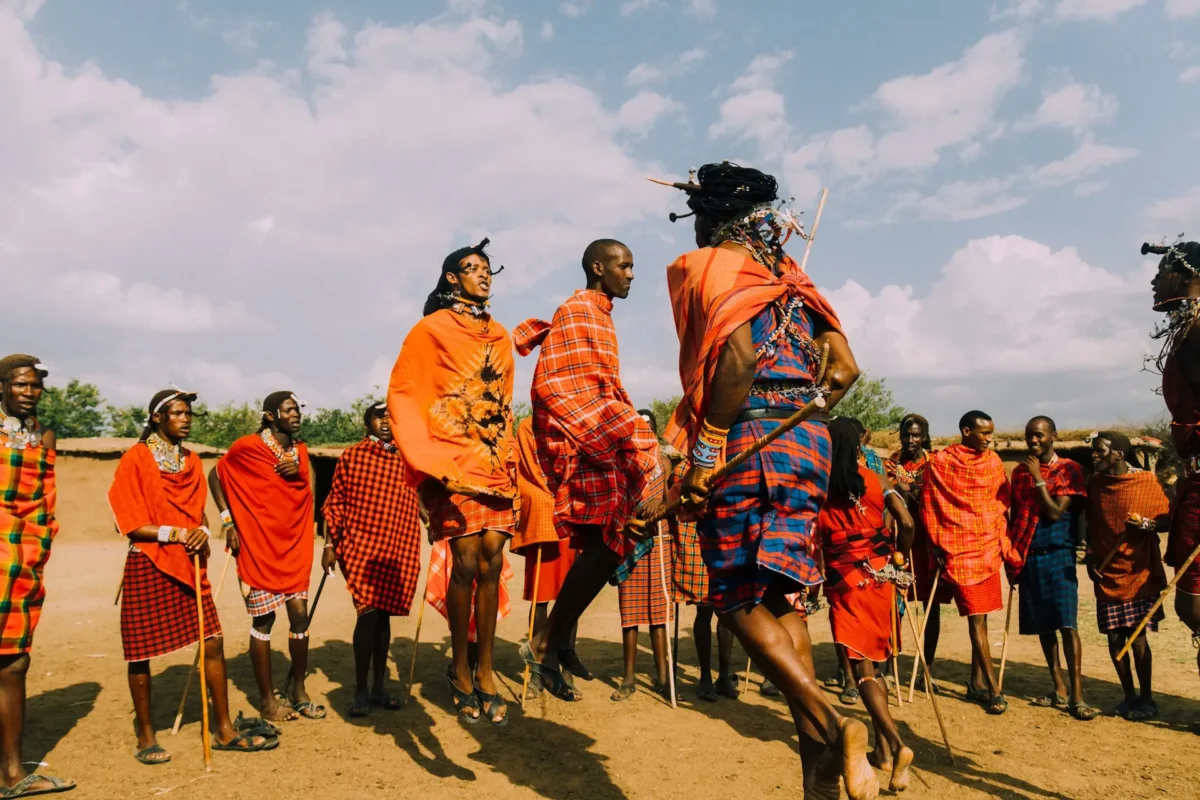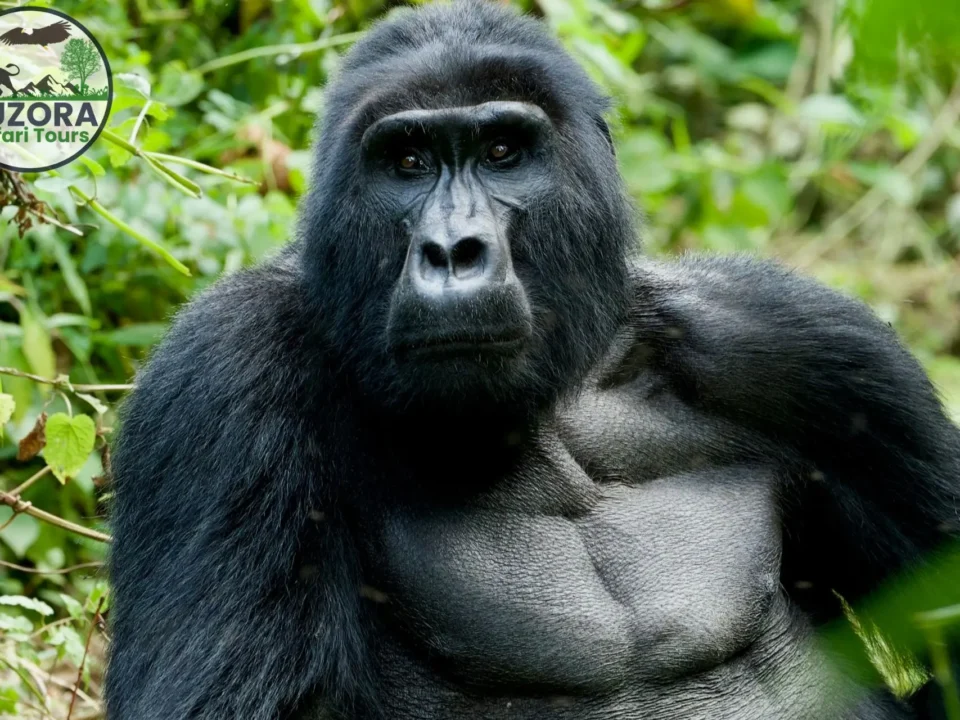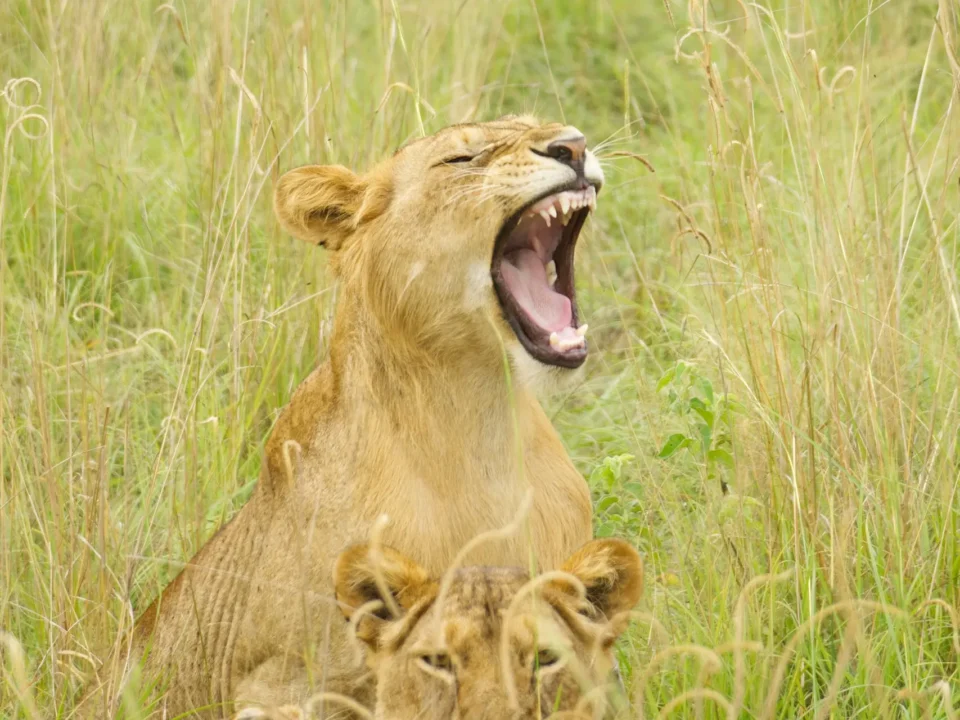Africa, a continent of unparalleled diversity, is home to thousands of distinct ethnic groups, collectively known as African tribes. Each group boasts a unique tapestry of history, language, customs, and beliefs, forming the rich mosaic of African tribal cultures. Far from being homogenous, these communities demonstrate an incredible range of adaptations, artistry, and social structures, shaped by their environments, histories, and interactions over millennia.
This post will embark on an insightful journey across this vibrant continent, exploring the fascinating cultures and traditions of 15 prominent African tribes. From the arid plains of the Sahara to the lush forests and remote villages, we will delve into their unique ways of life, highlighting their resilience, creativity, and the enduring legacy of their heritage. Our aim is to provide authentic information, acknowledging the vast diversity and distinct identities that define these remarkable peoples.
The Diversity of African Tribal Cultures
The sheer variety of African tribal cultures is astonishing. While common threads like strong communal bonds, reverence for ancestors, oral traditions, and a deep connection to the land often run through many, their expressions are uniquely tailored to each group. Geographic spread plays a significant role, with cultures varying dramatically from North to South, East to West, influenced by climate, resources, and historical migrations. Understanding these nuances is key to appreciating the rich human tapestry of the continent.
Featured African Tribes
Here are 15 famous African tribes, showcasing their distinctive cultures and traditions:
Masai (Kenya/Tanzania)

History of the Tribe:
The Maasai are a Nilotic ethnic group believed to have migrated south from the Nile Valley into present-day Kenya and Tanzania around the 15th century. Through their warrior prowess and pastoralist lifestyle, they expanded their territory, becoming a dominant force in the Great Rift Valley.
What They Are Famous For:
The Maasai tribe Kenya is iconic for their distinctive red shukas (garments), elaborate beadwork, and the Adumu or “jumping dance” performed by their esteemed warriors (Morani). Their deep reverence for cattle, which are central to their economy and spirituality, defines their way of life.
Challenges:
Loss of traditional grazing lands due to agricultural expansion, wildlife conservation areas, and urbanization. Climate change impacts their pastoralist livelihood, leading to recurrent droughts and resource scarcity.
Their Future:
Efforts are underway to integrate modern education while preserving their strong cultural identity. Some Maasai are diversifying their livelihoods (e.g., eco-tourism, small businesses) while striving to maintain aspects of their traditional pastoralism and advocating for land rights.
Batwa (Uganda/Rwanda/DRC)
History of the Tribe:
The Batwa tribe in Uganda (also found in Rwanda and DRC) are indigenous hunter-gatherer forest dwellers, considered among the oldest inhabitants of the Great Lakes region. In Uganda, they lived in the mountainous forests of the southwest, coexisting with gorillas for millennia, until their eviction from national parks in the 1990s for conservation efforts.
What They Are Famous For:
Their profound knowledge of the forest and its resources, traditional hunting and gathering skills, and rich oral traditions, including songs and dances that reflect their deep, symbiotic relationship with the forest. They are also known for their unique short stature.
Challenges:
The devastating loss of their ancestral lands has led to severe poverty, displacement, cultural erosion, and acute marginalization. They frequently face discrimination and struggle to access basic services like education, healthcare, and secure land tenure.
Their Future:
Advocacy groups are actively working to secure land rights and improve living conditions for the Batwa. Cultural tourism initiatives, where Batwa share their traditional forest skills and knowledge, offer some economic opportunities, but long-term solutions require addressing their fundamental human rights and socio-economic integration.
Zulu (South Africa)
History of the Tribe:
The Zulu rose to prominence in the early 19th century under the visionary leadership of King Shaka, who forged a powerful kingdom through military innovation and the unification of various Nguni clans. They are historically renowned for their formidable resistance against British colonial expansion.
What They Are Famous For:
Zulu tribe traditions are rich with vibrant music, powerful dances (such as Indlamu), and intricate beadwork used for both decoration and communication of social messages. Ancestor reverence and complex initiation ceremonies are central to their spiritual beliefs and community structure.
Challenges:
Urbanization and globalization often lead to a decline in traditional practices among younger generations. Socio-economic disparities continue to impact access to resources and opportunities in many Zulu communities.
Their Future:
Strong efforts are made to preserve the Zulu language and cultural heritage through educational programs, vibrant cultural festivals, and the continued respect for traditional leadership, ensuring their history and customs endure.
Himba (Namibia)
History of the Tribe:
Residing in northern Namibia, the Himba people are descendants of the Herero, having settled in the region in the 16th century. Their traditional ways have been largely preserved due to the remoteness and harshness of their environment.
What They Are Famous For:
The Himba people Namibia are distinctive for their striking appearance, achieved by applying otjize—a mixture of red ochre, butterfat, and aromatic herbs—to their skin and hair. This unique practice symbolizes beauty and their connection to the earth. They are also known for their intricate hairstyles, traditional cone-shaped huts, and the central importance of the sacred ancestral fire (okuruwo).
Challenges:
Recurrent droughts severely impact their livestock-based economy. Modernization pressures, including the allure of urban life and the effects of tourism, pose significant threats to their traditional lifestyle.
Their Future:
The Himba strive to maintain their cultural integrity despite external pressures. Community-based tourism initiatives aim to benefit the Himba directly while respectfully educating visitors about their unique way of life.
Karamajong (Uganda)
History of the Tribe:
The Karamajong are a Nilotic ethnic group inhabiting the Karamoja sub-region in northeastern Uganda. Their history is deeply rooted in pastoralism, with cattle being central to their social, economic, and spiritual lives, navigating a semi-arid environment for centuries.
What They Are Famous For:
The Karamajong of Uganda are known for their nomadic pastoralist lifestyle, unique traditional attire (nakatukok for men and kitsana for women), and elaborate beadwork worn by women. Their cattle-centric culture means livestock represent wealth, status, and are integral to all major ceremonies.
Challenges:
Severe climate change impacts, including prolonged droughts and erratic rainfall, gravely threaten their pastoralist way of life. Historical marginalization and insecurity in the region have also hindered development, leading to chronic food insecurity and poverty.
Their Future:
The Ugandan government and various NGOs are implementing programs for alternative livelihoods (e.g., sustainable agriculture, small businesses), education, and water harvesting. The ongoing challenge is balancing necessary development with the preservation of their unique cultural identity and adapting to a changing environment.
Yoruba (Nigeria/Benin/Togo)
- History of the Tribe: The Yoruba have a long and complex history, with ancient city-states like Ife and Oyo flourishing over a thousand years ago. These were sophisticated urban centers characterized by developed political systems, profound art, and complex spiritual traditions.
- What They Are Famous For: Yoruba culture Nigeria is renowned for its rich spiritual system centered around the Orishas (deities), elaborate festivals (like the Osogbo Sacred Grove festival), and intricate art forms, including masks, sculptures, and bronze casting. Their drumming traditions and complex social structures are also highly regarded.
- Challenges: Rapid urbanization and the pervasive influence of Abrahamic religions sometimes lead to the dilution of traditional practices among younger generations. Issues of political stability and economic development also impact communities.
- Their Future: The Yoruba diaspora actively promotes their culture globally. Within West Africa, efforts focus on revitalizing traditional languages and crafts, preserving historical sites, and integrating cultural education into modern curricula to ensure continuity.
Xhosa (South Africa)
- History of the Tribe: The Xhosa are one of the major Nguni ethnic groups in South Africa, with a history spanning centuries in the southeastern parts of the country. They played a significant role in South African history, including their strong resistance against colonial expansion.
- What They Are Famous For: Xhosa culture South Africa is known for its distinct “click” sounds in their language, elaborate traditional attire (including vibrant blankets and headwear), and significant rites of passage, particularly the male initiation ceremony (ulwaluko). Their rich oral tradition, including praise poetry and storytelling, is also a hallmark.
- Challenges: Persistent poverty and unemployment, particularly in rural areas, can undermine traditional community structures. Cultural practices face pressure from modern lifestyles and formal education systems.
- Their Future: The Xhosa language and culture are celebrated and taught, with figures like Nelson Mandela serving as a source of immense pride. Community projects and cultural festivals aim to preserve traditions and provide economic opportunities.
San (Southern Africa – Botswana/Namibia/South Africa)
- History of the Tribe: The San are believed to be among the oldest inhabitants of Southern Africa, with a history stretching back tens of thousands of years. Traditionally hunter-gatherers, they lived in remarkable harmony with their environment until their history became marked by displacement and marginalization with the arrival of other groups.
- What They Are Famous For: The San people Botswana are celebrated for their exceptional tracking and survival skills, ancient rock art found across Southern Africa, unique clicking languages, and ritualistic trance dances used for healing and spiritual connection. Their profound understanding of the natural world is unparalleled.
- Challenges: Loss of ancestral lands, forced resettlement, and persistent discrimination continue to threaten their traditional way of life. They often face severe poverty and limited access to essential services.
- Their Future: Ongoing efforts by NGOs and governments aim to secure land rights, promote cultural preservation, and support economic development initiatives (e.g., eco-tourism, traditional craft sales) that empower San communities while respecting their heritage.
Dogon (Mali)
- History of the Tribe: The Dogon people are thought to have migrated to the Bandiagara Escarpment in Mali around the 10th to 13th centuries, seeking refuge from encroaching groups. Their isolated cliff dwellings allowed them to preserve their highly unique culture and traditions over centuries.
- What They Are Famous For: The Dogon tribe Mali art is world-renowned, especially their elaborate wooden masks used in the Sigi ceremony (a grand masquerade cycle occurring every 60 years). They are also known for their distinctive cliff architecture and profound cosmological beliefs that include sophisticated astronomical knowledge.
- Challenges: The region faces significant security instability and conflict, which severely impacts tourism (a vital source of income) and disrupts daily life. Climate change also increasingly affects their traditional agriculture.
- Their Future: Despite formidable challenges, the Dogon maintain strong cultural practices. International efforts focus on preserving their UNESCO World Heritage sites and supporting local communities through development projects that are sensitive to their unique cultural heritage.
Ashanti (Ghana)
- History of the Tribe: The Ashanti Kingdom emerged in the late 17th century in what is now central Ghana, rapidly growing into a powerful empire based on its vast gold resources and a highly organized military. They famously resisted British colonial expansion for decades.
- What They Are Famous For: The Ashanti kingdom Ghana is defined by its sacred Golden Stool (Sika Dwa Kofi), believed to embody the soul of the Ashanti nation. They are also known for their rich Kente cloth textiles with symbolic patterns, intricate gold jewelry, and vibrant festivals like Akwasidae that celebrate their kings and ancestors.
- Challenges: The influence of globalization and modern economic systems can sometimes challenge traditional authority structures and cultural practices. Environmental degradation due to illegal mining (“galamsey”) is also a significant concern impacting their land.
- Their Future: The Ashanti Kingdom continues to be a major cultural and political force in Ghana. Efforts are focused on promoting Kente weaving, preserving historical sites, and integrating traditional values into modern governance and education.
Tuareg (Sahara – Niger/Mali/Algeria/Libya)
- History of the Tribe: The Tuareg are a nomadic Berber people who have historically traversed the vast Sahara Desert for centuries as traders, warriors, and pastoralists. Their history is one of fierce independence and remarkable adaptation to one of the world’s harshest environments.
- What They Are Famous For: The Tuareg nomads Sahara are distinct for their indigo-dyed clothing (earning them the moniker “blue people of the desert”), the veil worn by men (tagelmust), exquisite silver jewelry, and their unique ancient script, Tifinagh. They possess rich musical traditions and poetic expression.
- Challenges: Desertification, coupled with protracted political instability and conflict in the Sahel region, has severely impacted their traditional nomadic lifestyle and ancestral trade routes. Artificial national borders also divide their traditional lands.
- Their Future: Many Tuareg communities are advocating for greater autonomy and recognition of their distinct cultural identity. Efforts are underway to preserve their language and culture through education and documentation, while some are adapting to more settled lifestyles or engaging in sustainable tourism.
Ndebele (South Africa/Zimbabwe)
- History of the Tribe: The Ndebele are an Nguni ethnic group with origins in what is now South Africa. During the 19th century, some migrated north due to conflicts like the Mfecane, establishing a kingdom in present-day Zimbabwe, while other distinct groups remained in South Africa.
- What They Are Famous For: The Ndebele tribe South Africa is globally recognized for their incredibly vibrant and geometric house painting, often executed by women, which serves as a powerful and unique form of cultural expression. They are also known for elaborate beadwork, distinctive traditional attire, and the brass rings (idzila) worn by married women.
- Challenges: Modernization and urbanization often lead to a decline in the practice of traditional housing styles and art forms. Economic pressures can also limit the resources available for maintaining elaborate cultural practices.
- Their Future: There is a strong focus on preserving Ndebele art and culture through community-based tourism, craft cooperatives, and educational initiatives. Contemporary Ndebele artists are also finding new ways to express their aesthetics in modern art and fashion.
Hadza (Tanzania)
- History of the Tribe: The Hadza are one of the last remaining true hunter-gatherer communities in Africa, having lived in the Lake Eyasi region of Tanzania for possibly tens of thousands of years. Their history is defined by their remarkable resilience and ability to thrive without relying on agriculture or livestock.
- What They Are Famous For: Their pure hunter-gatherer lifestyle, relying entirely on wild food sources (berries, baobab fruit, honey, wild game), and their unique clicking language. Their deep ecological knowledge, egalitarian social structure, and minimal material possessions are also notable.
- Challenges: Persistent encroachment on their ancestral lands by farming communities and pastoralists, coupled with hunting restrictions in conservation areas, and the lure of modern amenities, threaten their traditional way of life.
- Their Future: Efforts are being made to protect their land and ensure their right to continue their traditional lifestyle. Sustainable eco-tourism provides some income, but the long-term challenge is balancing their ancient traditions with the increasing pressures of the modern world.
Oromo (Ethiopia/Kenya)
- History of the Tribe: The Oromo are the largest ethnic group in Ethiopia, with a history spanning many centuries. They developed the Gadaa system, a complex traditional socio-political system that governs generations and promotes democratic participation, which has guided their society for ages.
- What They Are Famous For: Oromo traditions Ethiopia are characterized by their unique Gadaa system of governance, a strong equestrian culture (especially among pastoralist Oromo), distinct traditional clothing often adorned with colorful patterns, and vibrant festivals and ceremonies. They also have a rich oral literature and spiritual traditions.
- Challenges: Political marginalization and historical oppression have unfortunately impacted their rights and cultural expression. Land dispossession for large-scale development projects remains a significant issue in many areas.
- Their Future: There is a strong, ongoing movement for cultural revival and political representation. Efforts focus on promoting the Oromo language, preserving the Gadaa system, and ensuring their rightful place in national development and governance.
Samburu (Kenya)
- History of the Tribe: The Samburu are a semi-nomadic Nilotic ethnic group, closely related to the Maasai, living in north-central Kenya. They are believed to have separated from the Maasai centuries ago but share a common ancestry and deeply ingrained pastoralist traditions.
- What They Are Famous For: The Samburu tribe rituals are expressed through their vibrant red clothing, elaborate beaded ornaments (often signifying social status), unique dances performed by warriors, and a semi-nomadic lifestyle centered around their cattle, camels, and goats. Their independence and resilience in arid environments are also defining traits.
- Challenges: Climate change leading to increased droughts and resource scarcity directly impacts their livestock, often forcing some to settle or seek alternative livelihoods. Security issues in the region can also affect their nomadic movements and traditional way of life.
- Their Future: Adaptation strategies are emerging, including diversifying livestock and embracing modern education. Community-based conservation and responsible tourism initiatives aim to empower the Samburu economically while helping to preserve their unique cultural identity.
Common Themes and Unique Expressions of African Tribe Dance
Across the continent, African tribe dance is not merely entertainment; it is a profound form of communication, spirituality, and cultural expression. Whether it’s the acrobatic displays of the Maasai, the powerful foot-stomping of the Zulu, the masked rituals of the Dogon, or the celebratory movements of the Karamajong, dance is integral to various ceremonies, rites of passage, storytelling, and celebrations. Each movement, rhythm, and costume often carries deep symbolic meaning, reflecting history, social roles, and spiritual beliefs, serving as a vital link between generations and the spiritual world.
Preserving African Tribal Cultures in the Modern World
The African tribes and their diverse cultures and traditions face both challenges and opportunities in the modern world. Issues like climate change, rapid modernization, urbanization, land dispossession, and historical injustices can threaten the preservation of traditional languages, practices, and unique ways of life. However, there are also significant, vibrant efforts to revitalize and celebrate these rich heritages through formal education, cultural festivals, sustainable tourism, and digital archiving. Many communities are actively working to adapt to modern realities while resolutely holding onto their core cultural values. By understanding and respecting these diverse traditions, we contribute to their preservation and ensure that the vibrant tapestry of African culture continues to flourish for generations to come.
The continent of Africa is a treasure trove of human diversity, powerfully embodied by its numerous African tribes. Each group, with its distinct cultures and traditions, offers a unique lens through which to understand humanity’s adaptability, creativity, and enduring spirit. From ancient rituals to contemporary expressions, the stories and ways of life of these communities are an invaluable part of global heritage. By appreciating and learning from this vast cultural richness, we foster a deeper understanding and respect for the incredible diversity that defines our world.
Frequently Asked Questions (FAQs)
What is the meaning of an “African tribe”?
In this context, an “African tribe” generally refers to a distinct ethnic group or community in Africa that shares a common ancestry, language, culture, traditions, and often a specific geographic origin. While the term “tribe” can sometimes carry colonial connotations, it is commonly used by many to describe their ethnic identity and cultural heritage.
How many tribes are in Africa?
It’s estimated that there are between 2,000 and 3,000 distinct ethnic groups or “tribes” in Africa, each with its own language and cultural identity. This number is approximate due to varying definitions and the fluidity of ethnic boundaries.
What are some common traditions across African tribes?
While vastly diverse, common traditions often include strong communal bonds and extended family systems, deep respect for elders and ancestors, rich oral traditions (storytelling, proverbs), vibrant music and dance for ceremonies and celebrations, and rites of passage marking key life stages (birth, initiation, marriage, death).
How are African tribal cultures being preserved today?
Preservation efforts include formal education (teaching indigenous languages and histories), organizing cultural festivals, traditional leadership maintaining customs, community-based tourism that directly benefits local people, digital archiving of oral traditions, and the work of NGOs supporting land rights and cultural revitalization projects.
Is it offensive to use the term “tribe”?
The term “tribe” can be problematic as it has historically been used in a way that implies primitivity or a lack of sophistication, particularly by colonial powers. However, many African communities self-identify as tribes, and it is a commonly understood term globally. The key is to use it respectfully and avoid generalizations or stereotypes, focusing instead on the unique identity and rich heritage of each specific group. When possible, using more specific terms like “ethnic group,” “community,” or the group’s actual name is preferable.




